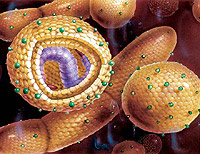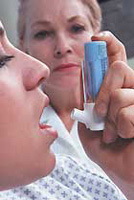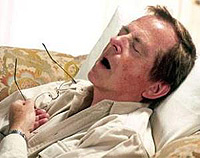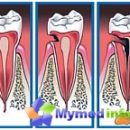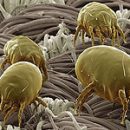Types of operational treatment of obstructive type of sleep apnea. What is ultra-phalastofaringoplasty? Possible complications during and after surgery.
Content
Types of operational treatment
Removal of increased pacific almonds and adenoids, which may violate the loss of breathing pathways. This is especially relevant in children.
Uvopalatoparingoplasty - This operation is in excision of the sky almonds, tongue (folds of fabric, which hangs around the middle of the back of the soft nose) and pieces of soft no.
Laser ulobesty - This operation is very effective in the treatment of snoring, however, for the treatment of night apnea syndrome, it is not suitable. Intervention is in excision using a laser of the tongue and parts of a soft nose. Since this operation helps to eliminate the most important feature of sleep apnea - snoring, it is recommended to study the character of sleep before operation.
Tracostomy - This method is used in the severe form of night apnea syndrome. A small hole is made in the trachea and a tube is introduced into it. In this case, the air passes into the lungs through this tube. The results of this operation are quite successful, but it applies only in those patients who have other treatments ineffective.
Other methods of surgical treatment of sleep apnea:
- Plastic surgery on the lower jaw aimed at changing its shape.
- Surgical intervention on the nose: for example, turbinetomy (surgical operation consisting in the removal of one of the nasal shells), septoplasty (operation aimed at eliminating defects of the nasal partition) and others.
- Surgical treatment of obesity.
What is ultra-phalangelastylasty (UPF)
UPF is a procedure aimed at removing unnecessary soft tissues of the oral cavity (soft nose, pharynx, parallery almonds) in order to expand the lumen of the respiratory tract. It is used to facilitate air passability in the treatment of obstructive type of night apnea syndrome.
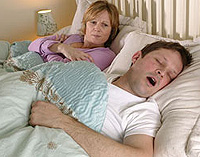 Usually, the following elements are excreted when the UPBP
Usually, the following elements are excreted when the UPBP
- The tongue is a plot of soft nose, which is located in the middle of the back of it and hangs down.
- Piece of soft nose.
- Excess fabric of pharynges, sky almonds and adenoids.
If the main reason for the obstructive type of night apnea syndrome is an enlarged language, then the surgeon excishes his small fragment. In this case, the operation is called uhluopalaptopharyngloflasty.
Operation is usually carried out under general anesthesia. After the operation, it may be necessary to continue the use of constant positive pressure in the respiratory tract (CPAP), which facilitates breathing in a dream and warns the respiratory tract. Some painkillers cause relaxation of the muscles of the respiratory tract. Therefore, after the operation, it is worth avoiding the use of such means to prevent the episodes of apnea. These drugs include narcotic anesthetic (priedol, morphine).
The UPP procedure is chosen as a method for treating sleep apnea syndrome at:
- The presence of excess soft tissues in the cavity of the nose, mouth, throat, which cause the blockage of the respiratory tract.
- In case of impossibility or reluctance of application for the treatment of constant positive pressure in the respiratory tract (CPAP).
- In the event of the ineffectiveness of the above method (CPAP).
- If you do not want to resort to the operation of tracheostomy.
Children usually do not use UPFP. For them, it is most often enough to perform tonsillectomy or adenoidectomy.
It should be remembered that the UPP can completely eliminate the snoring, but the patient can continue to suffer the night apnea syndrome. Some studies conducted throughout the world indicate that the UPF procedure provides positive results of treatment in 40 - 60% of patients. However, even with the positive results of the operation, the patient may experience the need for the use of constant positive pressure in the respiratory tract (CPAP).
Possible complications during and after surgery
Costs during surgery include random damage to surrounding soft tissues and blood vessels.
Postoperative complications may include:
- Sleepiness and episodes of apnea due to the use of painkillers after surgery.
- Eyefather in the field of operating wound, pain, infectious complications and bleeding.
- Problems with speech. After the operation, the patient can speak as if «through nose».
- The narrowing of the respiratory tract at the nose level.
It should be noted that before you decide on operational intervention, it is worth trying to try conservative treatment, namely the constant positive pressure in the respiratory tract (CPAP). After the operation, the UPFC should be conducted to study the character of sleep (polysomnography) in order to find out whether the positive results of the operation are noted. If after surgery you still experience the episodes of apnea, conservative treatment should be continued.
Recently, laser tiplasty is increasingly used. This operation differs from the usual UPP by the fact that it is more economical and safer. It is based on the fact that the laser is like «evaporates» edge of soft nose and tongue. In contrast to the UNFPP, the laser tip procedure may require a re-execution to achieve a better result. The number of procedures can reach four. During this procedure, the removal of palatal almonds is also performed. And although laser withdrawal is characterized by a smaller number of postoperative complications, painful syndrome remains moderate after operation.



